
Review: Ing an Die at the Carnival Studio Theater, Miami
 Contemporary dance performances are perhaps the most unpredictable events of all the performing arts. One never knows what to expect from the performers and choreographers, other than supremely toned bodies exhibited in costumes and clothing that push the boundaries of modesty and exhibitionism equally. In fact, it appears to this reviewer that the fashions of dancers would make for a great blog, book or paper topic for those, like me, who are intrigued by the nature of clothing and it’s contextually-specific relationships to the human body.
Contemporary dance performances are perhaps the most unpredictable events of all the performing arts. One never knows what to expect from the performers and choreographers, other than supremely toned bodies exhibited in costumes and clothing that push the boundaries of modesty and exhibitionism equally. In fact, it appears to this reviewer that the fashions of dancers would make for a great blog, book or paper topic for those, like me, who are intrigued by the nature of clothing and it’s contextually-specific relationships to the human body.
In James McGinn‘s Ing an Die, performed recently at the Arsht Center’s Carnival Studio Theater in Miami, the role of costumes was intriguingly partnered with a minimalist set and an exquisite curating of musical accompaniment. To speak of the secondary elements in Ing an Die is in no way an unflattering rendering of this lovely and opaque performance so rich in humour, love, passion and and wit.
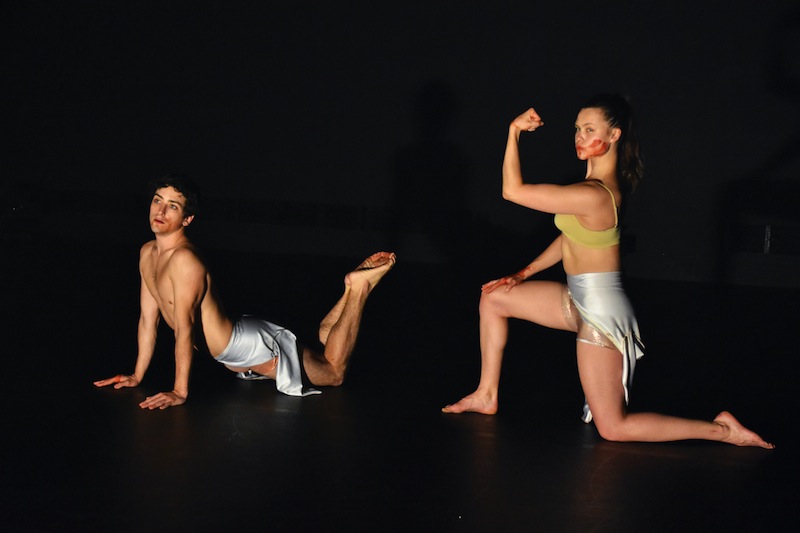 Mr. McGinn, the choreographer and lead dancer was paired with his fellow collaborator and close friend, Inga Huld Hákonardóttir, who gave an exceedingly electric performance of her own. While the two dancers seemed somewhat ill composed as a pair, with Mr. McGinn the very resplendant slim, sleek, and toned diminutive lead playing opposite the more robust and and curved (in a sexy and appealing way) Ms. Huld Hákonardóttir, there was no doubting the wonderful chemistry and commitment present in the three-part piece.
Mr. McGinn, the choreographer and lead dancer was paired with his fellow collaborator and close friend, Inga Huld Hákonardóttir, who gave an exceedingly electric performance of her own. While the two dancers seemed somewhat ill composed as a pair, with Mr. McGinn the very resplendant slim, sleek, and toned diminutive lead playing opposite the more robust and and curved (in a sexy and appealing way) Ms. Huld Hákonardóttir, there was no doubting the wonderful chemistry and commitment present in the three-part piece.
In a recent interview in Art Burst Miami Mr. McGinn explains the three part division of the overall performance:
In “Ing an Die”Act I is entitled Form, Act II is entitled Fiction, and Act III is entitled, Fate. Form critiques a kind of hyper-elitist sense of high art. Fiction deals with the fictions of life, social constructions, performative gender and mainstream commercial systems. Act III deals with time and asks the question: do we have to have these power systems? Why are we still arguing over all this when we are faced by such exponential conflict in the world, whether violence from global warming or events like mass shootings.
The trilogy of acts were of a unique identity that very loosely fused into one whole piece. Perhaps the most alluring and jarring element of artifices (and there are many in Ing an Die) was the sight of blood slowly dripping, then oozing quickly, from the mouths of each performer at the end of Act I.
While each dancer would change into new costumes for Act II, the traces of blood smeared on their faces and hands proved an especially vivid and memorable visual cue, a pointer or remembrance of the recent history of the performance, itself a kind of philosophical inquiry into the nature of loss, violence and proximal risks taking place when one dares to make that leap of passion.
It is situations, memories, and concepts like these that make Ing an Die a special event, one not easily classified as “contemporary dance.” Between the very heavily improvised third act and the utter commitment to dramatic tension subtly illuminated by comedic levity throughout, I can only speak for myself when I say that Mr. McGinn is a rare multi-layered talent, a dancer who authors works that transcend the simplistic notion of performance to enter into our collective imaginaries.

Art Basel Miami Beach Announces 2017 Gallery Line Up
October 11, 2017 in Art, Culture
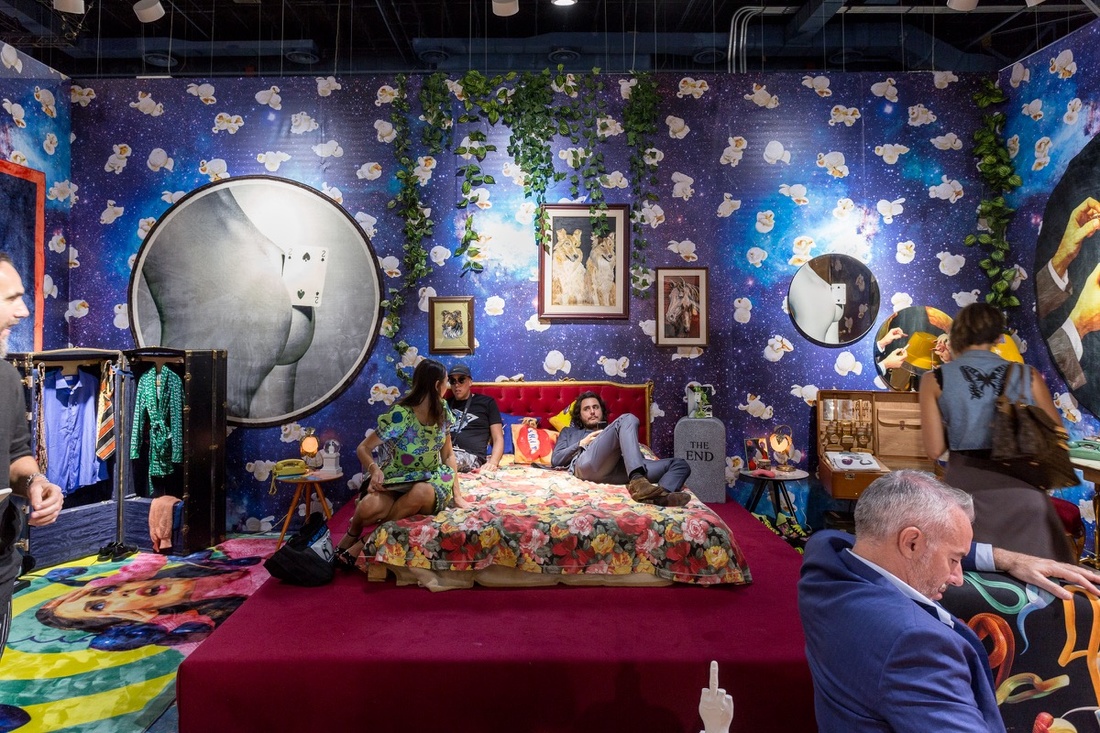
Get ready for the annual Miami Beach art fest known as Art Basel. The art fair organization based in Basel, Switzerland has created a sensation with its Miami Beach version. The fait in the Miami Beach Convention Center has spawned many copycats and satellite fairs, making Miami and Miami Beach the places to be if you want to party with art stars, collectors, curators and hangers-on.
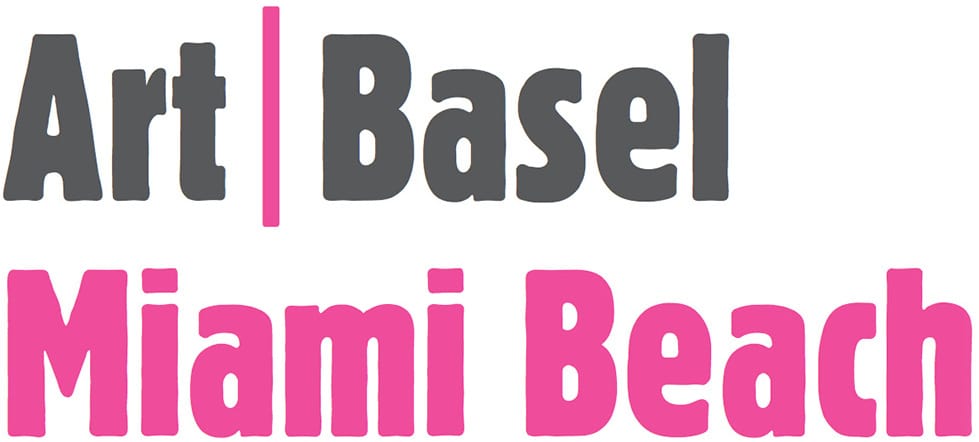
The people-watching and fashion alone are worth the trip. Oh, there’s contemporary art as well. The leading, most discerning (and pompous, snobby, and pretentious) galleries, galleristas, wannabes and artists will be there. So should you.
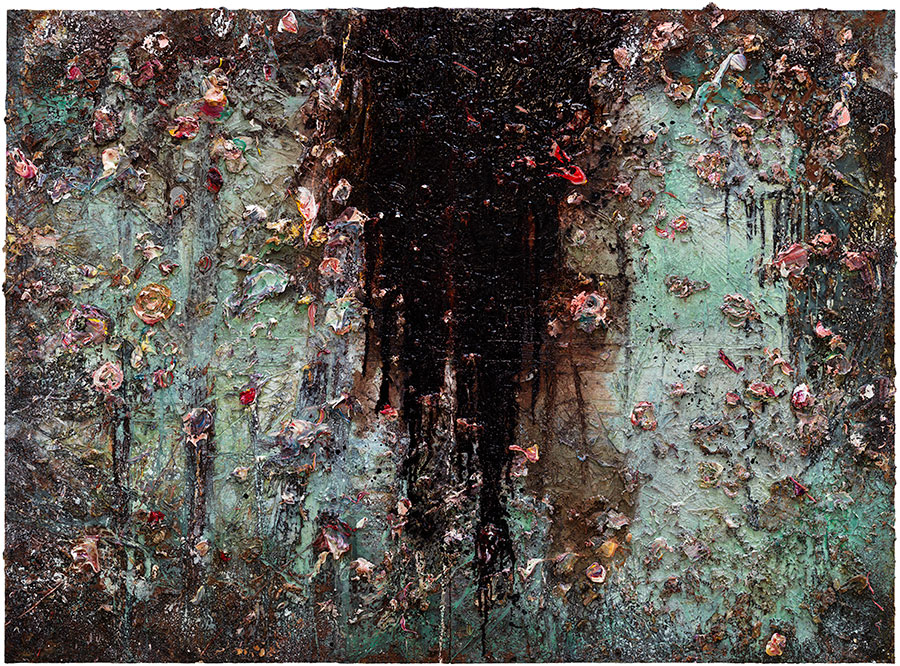
A work by Anselm Kiefer from the Gagosian Gallery in New York
Art Basel Miami Beach just announced their gallery line up for 2017. In it’s 16th edition, the show will feature galleries from New York, Montreal, Moscow, Buenos Aires, Los Angeles, Paris, London and many other cities. Asian locales and artists are especially hot this year.
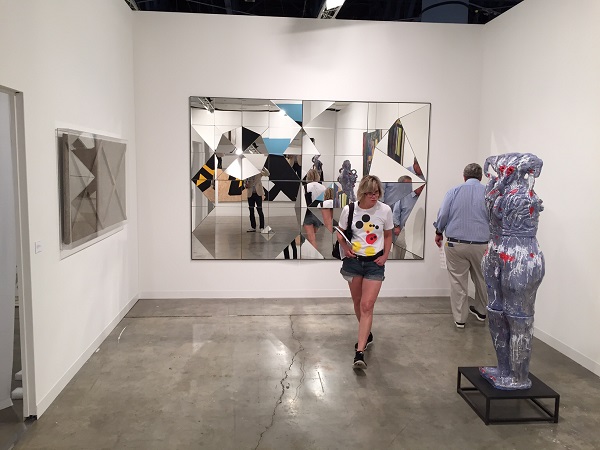 The show’s official press release provides this interesting news:
The show’s official press release provides this interesting news:
This year, a strong list of returning participants is joined by 10 galleries which have previously participated in the show’s Nova, Positions or Survey sectors: 47 Canal, Bureau, Garth Greenan Gallery, Kalfayan Galleries, Galeria Leme, Peres Projects, Galeria Plan B, Sfeir-Semler Gallery, Jessica Silverman Gallery and Tokyo Gallery + BTAP. One gallery – Applicat-Prazan – will be completely new to the show while Konrad Fischer Galerie and Fergus McCaffrey will both return to the Galleries sector in Miami Beach after a hiatus.
You can read the full list here.

Exclusive Interview With Robert Silverman, a Progressive Rabbi for the 21st Century
September 28, 2017 in Interviews, Living
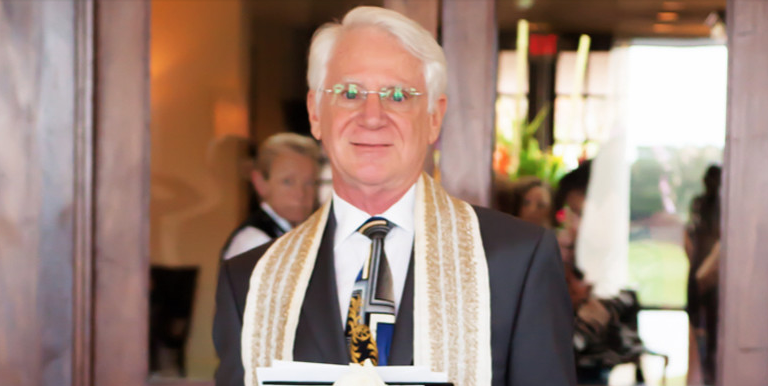 Rabbi Robert Silverman is one of the most celebrated and progressive Rabbis in America. The Boca Raton-based Silverman has been a wedding officiant for over 40 years and was one of the first South Florida wedding officiants to preside over same-sex unions. The following interview was conducted over the course of a few weeks in September 2017.
Rabbi Robert Silverman is one of the most celebrated and progressive Rabbis in America. The Boca Raton-based Silverman has been a wedding officiant for over 40 years and was one of the first South Florida wedding officiants to preside over same-sex unions. The following interview was conducted over the course of a few weeks in September 2017.
Describe a recent beautiful wedding you officiated. What was the most memorable moment?
A couple from New York planed a destination wedding in South Florida. We spent a lot of time on Skype, Emails and phone calls. The wedding was in beautiful Coral Gables and the bride was very nervous. After performing weddings for over forty years you would think you would have seen it all. The bride’s parents walked her down the aisle. The Father of the Bride, when giving his daughters hand in marriage, gently put both of his hands on her hand and gave her hand to her Groom. It was one of the most touching moments.
What would be your number one piece of advice for anyone thinking of having an interfaith wedding service?
Early on in the planning process, spend time with both of your families, and let them know that you want to talk to them about the wedding ceremony. Explain to them that you want to have a wedding that celebrates both of you and the different faiths you come from, and that you are interested in hearing what is important to them for your wedding. Listen gratefully and let them know you hear them and appreciate their suggestions. Then the two of you can decide together what is most important for YOUR wedding. If you feel comfortable with their imput then include their ideas, but if not, you will still have an understanding of what they wanted and be able to incorporate pieces of it in ways that feel true to both of you.
What makes a Jewish wedding so unique?
Traditions! Although there are many, The Ketubah is one of the most important traditional features of a Jewish wedding. This is a marriage contract is signed just before the ceremony and becomes a lifelong contract to be honored by the bride and groom.
What is the craziest thing you’ve ever seen happen at a wedding?
The wedding was on an island where it was only assessable by boat or sea plane. Everyone was required to wear white. A band was not permitted on the Island. After I walked down the aisle one man stood up and started singing. Another man and another man and another man etc. This was the most incredible acapella group. They sang all night.
Describe the needs and requirements for both families when putting together an interfaith wedding.
Involve your families in the planning, but don’t let them steamroll you or make the decisions. Find a wedding officiant (or two!) from both of your faiths to conduct your interfaith ceremony who has had done this before.
Be Creative! Have all the important conversations before your wedding and ask questions:
- How would you want to raise kids, if you want to have them?
- Which holidays do you want to celebrate and how?
- How will you navigate difficult decisions and ensure that both of you feel heard and understood?
- Who will you both turn to for advice and support when things get tough?
- Do you have friends who have an interfaith relationship that you admire, and who can give you guidance.
Do you feel that your role officiating same-sex unions is important?
It is very important! When two people love each other so much that to them joining together as as one it is my responsibility to perform their ceremony to show that it is appropriate for them.
Bob Dylan wrote “The Times They Are A-Changin'”
Come mothers and fathers
Throughout the land
And don’t criticize
What you can’t understand
Your sons and your daughters
Are beyond your command
Your old road is Rapidly agin’
Please get out of the new one
If you can’t lend your hand
For the times they are a-changin’.
What, in your opinion, makes a wedding beautiful?
Writing your own vows.
When one begins to write their vows for their wedding it is important to know that this is the time to express their truest and deepest feelings. It may be words and feelings that have not been said or expressed until that moment. These words are said heart to heart. Their guests feel the emotional connection between the couple.
In the years you’ve been officiating, how have weddings changed?
First look- the groom seeing the bride before the ceremony. Moms walking the Bride down the aisle has become common. Many more destination weddings. Delaying honeymoon plans. The first dance has changed to a more choreographed routine.
Are there common things that couples don’t seem to take into account when planning a wedding (especially in Florida)? What are they?
Knowing the number of guests before looking for the venue. Having a planner or at least a day planner. Confirming that invitations were received. Creating a time line to keep you on track. Set a realistic budget. Know the weather of your destination especially in Florida. The summers months are not comfortable for the wedding party and guests.

Rudin Prize at the Norton Museum of Art
September 27, 2017 in Art
The four artists featured, Clare Benson, Elizabeth Bick, Alexandra Hunts, and Wesley Stringer, were nominated by more established senior contemporary photographers Arno Minkkinen, Shirin Neshat, Rineke Dijkstra, and Michael Kenna, respectively. Curated by Tim B. Wride, the Norton Museum of Art’s William and Sarah Ross Soter Curator of Photography, the exhibition unwittingly provides an illustrated manifesto on the relationship between sociological inquiry and image-making among young artists today in terms of the work featured and the subject-matter of photos shown.
Make no mistake, this show is a cold demonstration of art as concept that drives the production of image-making. In short, the artists each utilize a personal approach to their craft that requires the reading of extensive conceptual background information, biographical notes and various other bits of textual instruction manuals in order to enter the zone of their intellectual aspirations. Here art exists solely in reference to something else. It cannot exist, or be (emerge?) on its own.
For the Rudin Prize, these so-called “emerging” artists will dream of one day entering the collector’s stratosphere of million dollar prices for their works. For now, they are displayed in a four-person quasi-intellectually-relevant show that tantalizingly illustrates the ambitions and downfalls of photography as repressed sociological forays attempting to masquerade as self-discovery, visual wit, and conceptual sculpture.
Clare Benson
Clare Benson’s photographs feature the artist in various poses and non-poses caught in the middle of performative gestures that designate or symbolize the artist’s blue-collar background. Specifically, in works like “The Shepherd’s Daughter”, the artist evokes woman in the wild imagery in a feminist response to the archetype of the man in the wild fighting nature tropes common throughout art history and viewed in an especially flamboyant phenomenon, The Revenant, a film directed by Alejandro Gonzalez Inarritu.
Benson writes of her mother dying while she was young. Her childhood destiny followed a path of growing up with her father, an avid hunter and outdoorsman. Her work appears to be a meditation on the physical and psychical evolution of her past, from girl to woman, heavily influenced by the masculine pastimes of hunting, skinning and mounting wild animals.
Overall the impression I am left with is that the acts of making these works are more interesting than the resultant photographs themselves. While Benson’s story, like all family historiographies, contains many poignant memories and utterances, they are not necessarily the stuff of epic art or even memorable photographs to the non-family member.
The central phenomenological component of her work is the exploration of rural America and its notions of manhood through the depiction of herself. Her “self” is indeed the principal material around which she builds her photographic records. The works themselves are produced digitally in archival color pigment prints and provide an almost scrapbook quality of flatness in both color and pictorial composition.
Archival pigment prints are the digital photographer’s attempt at achieving reputable picture quality in an enlarged physical form. The unfortunate result, however efficient and affordable for printing and archiving purposes, is a series of photographs that look cheaply-created, plasticy in appearance, and colder than the Alaskan wilderness shown in Benson’s images.
Elizabeth Bick
Elizabeth Bick’s work is represented by a series of photographs of crowds and random individuals shot in The Pantheon in Rome, on city sidewalks and in other venues. The Pantheon is famous for hits open dome that allows both sunlight and the elements of precipitation to fall directly into the structure. The intense contrast between the dim interior and the blazing shafts of natural light illuminating the viewers is captured theatrically by the artist. The works depict tourists shielding the light from their eyes and in various states of quasi-excitement and intrigue, hinting at, but not quite reaching, awe. The Chromogenic prints offer a filmic display of moments in heavy chiaroscuro befitting of the Italian setting.
Simple snapshots, the photographs provide a more documentary-like aesthetic than a visceral or artistic one and remain cute and perhaps even amusing in the way travel photos are for relatives of those who went abroad, despite falling short of the sublime and never escaping their banality.
Alexandra Hunts
I’ve always loved the word “sculptress”. The feminine denomination of “sculptor” provides an apt and luminous way to enter the oeuvre of Alexandra Hunts. Working with photographs in variously three dimensional iterations (artist books, stacks/series of photos, she is more of a sculptress than a photographer. While she is exhibited as a photographer in the Rudin Prize exhibition, her work employs picture-making as but one aspect of her concept-based art forms. Her exploration of physicality and ephemera (weights and measures, the flow of time and the range of typologies as evidence in the cultivation of apples) make her an artist whose development flows within the conceptual traditions of Bruce Nauman and John Baldessari. Concept becomes manifest in three dimensions through banal things. They are then photographed and made into framed pictures, artist books, and other forms.
In Search from 2016, the artist meticulously weighs apples by the kilogram in the middle of an orchard. Once the proper amount is weighed, she photographs them formally displayed as in some scientific manual. The video displayed on her website (http://www.alexandrahunts.com/2015/search/) gives viewers a three-channel view of the processual nature of this work.
The physical and material grounds of Hunts’s work make up the conceptual underpinnings in a multi-disciplinary approach to mind puzzles. The intrigue lies in the momentary mental points of reflection that result. Hunts engages the metaphysics, pataphysics and simple physicality of materiality and gesture to illumine. There is a surrealist and psychotic, obsessive element to her explorations and they easily provide the most intellectually-fulfilling presence in the exhibition even though the resultant photographic works displayed serve more as documentary evidence than aesthetic experiences in themselves.
Mass.Sublime measurement from Alexandra Hunts on Vimeo.
Wesley Stringer
Wesley Stringer’s visitations of rural landscapes, windows, and various nature scenes in undisclosed, banal locations provide an insight into the artist’s origins in Oklahoma. The works exhibited in the exhibition, color archival pigment prints as well as micro photographs boxed into hand-made pieces called “Box of Birds”, make for a disparate representation by the artist.
There is the wanderer and chronicler of abject rural banality on the one hand and the sophisticated and precious black and white picture-maker on the other. The color photos are flat, spare, intentionally over-exposed and devoid of vibrancy in what can only be an intentionally-conceptual illustration of the blankness and economic vacuity of rural America.
There is a poignancy to Stringer’s work. There is also a richer and more consumer-friendly side to his oeuvre as evidenced by his mostly black and white portraits of skinny and seductive, mysterious and somewhat cliché female models, neither of which are exhibited in the Rudin show.
The question one must ask viewing the four artists presented is one of the relationship between the aesthetic and the intellectual. At what point does intellectualism and conceptual art become a practice that defines art-making by virtue of its knowledge-heavy influences and the will to find a conceptual justification for the existence of the work made? Did the conceptual art movement of the 1960s and 1970s, a product of the American-Puritanical pragmatic ethos, come to reign quietly over contemporary art in America in an invisible and implied influence over most artists who practice photography, sculpture and painting today? Does such an influence lead to a false form of knowledge inquiry, a superficial, rigorless and mostly irrelevant sociological approach to art-making that turns today’s artworks into self-indulgent provocations, propaganda or psycho-sexual self-immolations?
There is no doubting the display of mock intellectualism masquerading as self-discovery in much of the underlying premise in today’s artists and the Rudin Exhibition protagonists are no exception. I indict the culture of contemporary art, more specifically, it’s academic gate-keepers who use the under-regulated confines of art departments in academe as playgrounds for their socio-political agendas exploring and deconstructing everything from the color of one’s skin to one’s gender and sexual orientation where the work that results is mostly stifled with ressentiment.
To make identity the center-piece of today’s conceptualism is to make the art process an exercise of self-exploration, one better suited to meditation and philosophical treatises than to painting, photography or sculpture. Artists broach dangerous risks when they make themselves, their histories and their autobiographical politics the ground and the source material upon and with which they build their work. The risk is one of self-parody and the trivialization of genuine existential oppression, violence and injustice.
In short, art based on the identity politics ideology often manifests itself as a crudely and narcissistically utilized methodology. If you ever want to see a patently dysfunctional and anti-intellectual methodology in play then visit an art faculty meeting or faculty hiring process. You will be amazed at the superficiality and pedantry surrounding gender, culture and other ideological markers of identity among the so-called professors of progressive art-making. What results is often a debasing of intellectual integrity at the service of obsessive-compulsive identity fetishism.
The autobiographical or sociological inquiry of one’s self (identity) is the poor neglected offspring of philosophical inquiry, an attempt to explore and explain the social, its phenomena, and its milieus through a variety of lenses: marriage, gay sexuality, racism, demographics, etc…
Sociology is the problem child of philosophy that likes to pretend it is cooler than mom and dad while coloring its hair blue and piercing its various body parts in an outcry of self-referential attention-seeking. The piercings and hair colorings are attention-grabbers but they do not convey any more gravity than say a bad tattoo or artificially-distressed designer jeans.
Within the context of contemporary art sociological inquiry is employed to less than scientific ends, devoid of rigor and peer-review, and leaning more towards psychological examinations of the artist’s ego and his/her place in the world. It is, in short, the path artists tread as an intellectual justification for their work. The resultant art works often require the reading of some form of introductory text/context, an art-speak instruction manual that provides entry into the practitioner’s world in much the same way one reads the instructions (or constructions as my dad calls them) of cheap Chinese-fabricated toys presented with love and a blissful lack of awareness regarding the exploitative origins of the product’s manufacturing process.
Much of today’s contemporary art practitioners seek intellectual and conceptual justification from their peers and betters, for their work, first and foremost, robbing the creative process and its output of any mystery and spiritually transcendental opportunities. Art becomes a form of knowledge-seeking, inherently prosaic and blind to the poetic origins of craft and making that characterize aletheia.
There is no end in sight to the wounded intellectual potential of sociological inquiry among many of today’s self-referential pseudo-political artists because of the demise of the belief in passion, beauty, joy, pleasure, kindness, love and other more traditional aesthetic concepts and affects that characterized artists who saw their place in the world as one of enhancement and spiritual inquiry. Such phenomena that guided most of modern art’s output up to World War II have been assumed or presumed dead by the ideological progenitors of what is called “contemporary art”. To be sure, contemporary art is more an ideology than a term used to define art of the present day.
This is art’s playing field and perhaps its central conceit today: a will to intellectual legitimacy through picture and object-making endeavors that pre-require an engagement with various lexicons of cultural and political discourses. Contemporary art has become the handmaiden of academic theorists. The artists are the aesthetic mouthpieces of their textual masters precisely because the lovely seductive passions of intellectual training and philosophical rigor necessary to write comprehensible and culturally relevant work remain all-too-elusive and hidden from minds that cannot fathom beauty and joy in life or art, or the dedicated rigorous research and learning required to think and write insightfully within any epistemological pathway, from any tradition. In fact contemporary art, by nature, rejects the notion of tradition and the artist’s emergence from it or need to engage with it. This negation of intellectual lineage and continuity is precisely the intellectual shortcoming of most of today’s contemporary art production.
Art’s attempt to be “new” or “novel” in this way pre-disposes most artists to a false and sterile game of intellectual solitaire, perpetuating the Romantic myth of the singular artist but reducing his or her conceptual aspirations to a superficial gamesmanship.
If there is one thing that undergirds the entirety of the exhibition at the Norton Museum it is the use of photography to illustrate and convey processes in intellectual and emotional navigation by the artists presented. The photos rarely transcend the conceptual origins to become Works that resonate independently. Mostly, these are works (with a small “w”) and for many (those lacking in ambition and perhaps art historical training) that is just fine. For viewers wanting more, the show will leave you a bit cold and perhaps disinterested, maybe mildly amused the way one would feel modestly piqued by say, a Cosmopolitan magazine sex survey or an Internet click-bait scheme entitled “And the Camera Kept Rolling..”.
That the winner of the $20,000 Rudin Prize went to Elizabeth Bick, the creator of the most banal and the most publicly-engaged work in the show, may be viewed as an utterance by the voting committee of its preference for work that attempts to escape the self and the artist as subjecthood. It is interesting that the winner of the “People’s Choice” Award, voted by visitors to the exhibition, was Wesley Stringer, author of the most visually-evocative photographs and sculptures presented.
Despite the realms of disappointment and predictability permeating The Rudin Prize artists there is much to learn from the exhibition. It is a current example of art as sociology, as quasi- or pseudo-intellectual inquiry, primarily of the self-centered variety, where the art practice is subsumed by the articulation and predisposition of some form of cerebral endeavor, devoid of emotion, removed from passion, and visually flat, like illustrations in a 1960s biology textbook.
It will be left to the viewer to ponder the meaning of emerging.

Ocala Pastor Roland Scroggins Is Helping Alzheimer’s Patients With His Beautiful Hand-Made “Fidget” Quilts
in Everyday Heroes, Featured Articles, Living, Philanthropy News
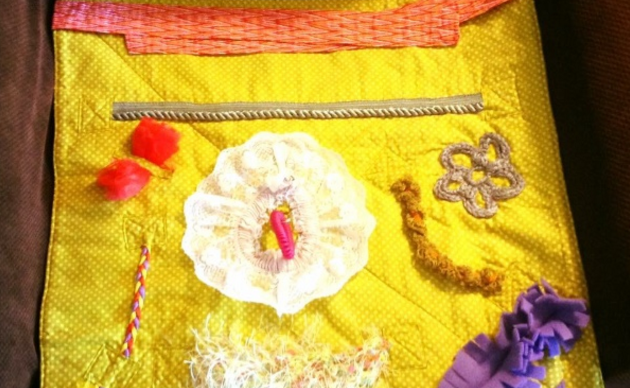
A recent Fidget Quilt made by Pastor Roaland Scroggins
Sometimes it’s the little things and the little gestures that make a difference. Ocala, Florida Pastor Roland Scroggins brings comfort and even happiness to local Alzheimer’s Disease and Dementia patients by giving them gifts of his hand-crafted “fidget” quilts. The quilts are colorful and comfortable lap quilts complete with zippers, buttons, frillies and other interesting textural items sewn on the surface to help keep the hands of his elderly friends busy.

Paster Scroggins with his wife Janet.
Studies have show that by manual manipulation of objects, Alzheimer’s patients can reduce stress and suffering caused by their debilitating disease.
“Most of the people who get these don’t even know that I made them and I gave it to them” says Pastor Scroggins, the semi-retired transplant from the Pacific Northwest.
He says he has completed more than a dozen quilts already and he has a Go Fund Me page for those interested in donating to this wonderful cause. The Go Fund Me page was created by one of the Pastor’s kids: “He, along with my mother, Janet Scroggins, goes to rest homes to play the piano, sing and give an encouraging message to the residents.”
We celebrate Pastor Scroggins as one of our Everyday Heroes!

Kristen Bell and Friends Get Stranded In a Hotel Thanks to Hurricane Irma: A Good Time Ensues
September 13, 2017 in Celebrity Giving, Entertainment, Philanthropy News
Getting stuck in a hotel force to wait out a hurricane may not be your idea of a good time but getting stuck with Kristen Bell? Well, let’s say that the star of Spartan, Forgetting Sarah Marshall and Frozen proved to be a treat for the many elderly and other folks stranded during Hurricane Irma.
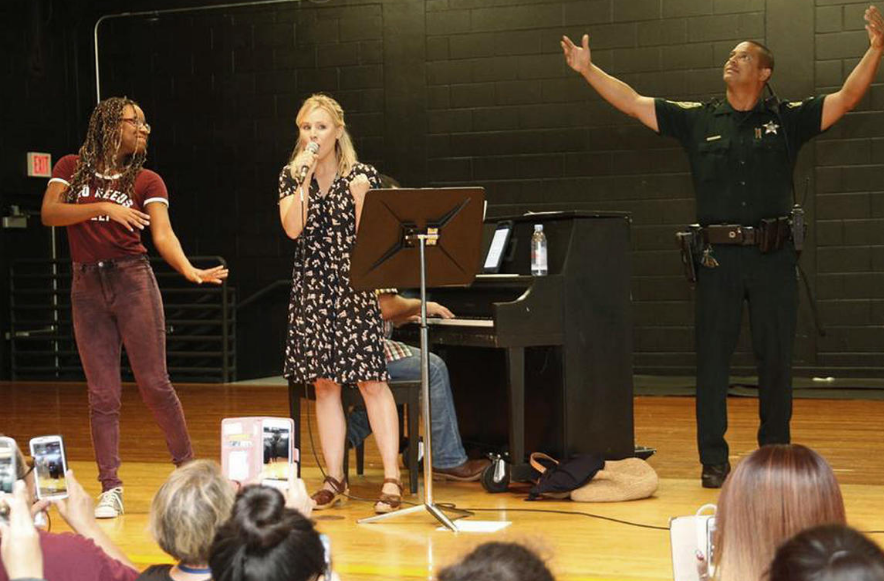 Here is a clip of her appearance on Late Night With Jimmy Fallon
Here is a clip of her appearance on Late Night With Jimmy Fallon
Here is her new friend John serenading her, from her Instagram:

The 20 Year Odyssey of Tulip Fever As Told By Its Writer, Deborah Moggach
August 30, 2017 in Entertainment, Film
Tulip Fever is getting lots of advance praise for it’s period details, steamy eroticism, and big-hearted dramatic love story. The movie, starring Alicia Vikander, looks to be a sure-fire arthouse hit that transcends the intimate confines of fringe appeal and makes its way into the theaters and hearts of film-goers across the globe.
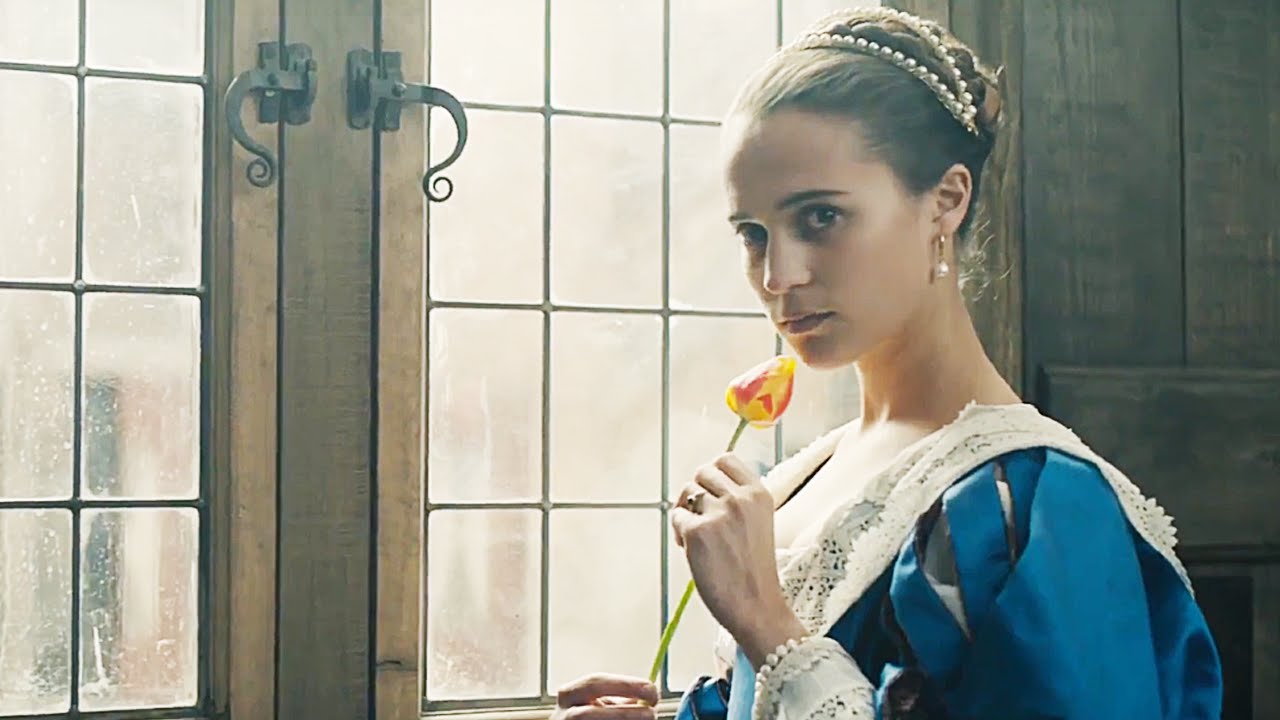
Tulip Fever had an an interesting genesis in its evolution from screenplay to release this week. The screenwriter and author Deborah Moggach recently detailed some of the travails involved in getting the film produced after 20 long years of waiting:
The moment I’d finished writing my novel Tulip Fever the phone rang. It was Steven Spielberg, speaking from his car. Within days he’d snapped up the movie rights for his DreamWorks SKG and I was flying to Hollywood for a script meeting. My great adventure had begun.
Events moved fast and soon the movie was in pre-production. It was to be a $48 million film, the biggest U.K. film of the year. Tanks were sunk to create the canals of Amsterdam, sets were built, the stars assembled — Natalie Portman, Jim Broadbent and Jude Law — and John Madden was set to direct. Twelve thousand tulips were planted, for their roles in the drama. It was thrilling beyond belief.
And then, a few days before it was due to start shooting, the British Chancellor, Gordon Brown, suddenly closed a tax loophole for funding movies and the film collapsed. Scores of talented people lost their jobs. The only survivors were some of those 12,000 tulips, which I gave to my neighbors in London. They planted them in their gardens and each spring I watched my horticultural cast burst into bloom — a bittersweet sight.
You can read the full story in her Hollywood Reporter article.
Here is the official Preview:
- « Previous
- 1
- 2
- 3


